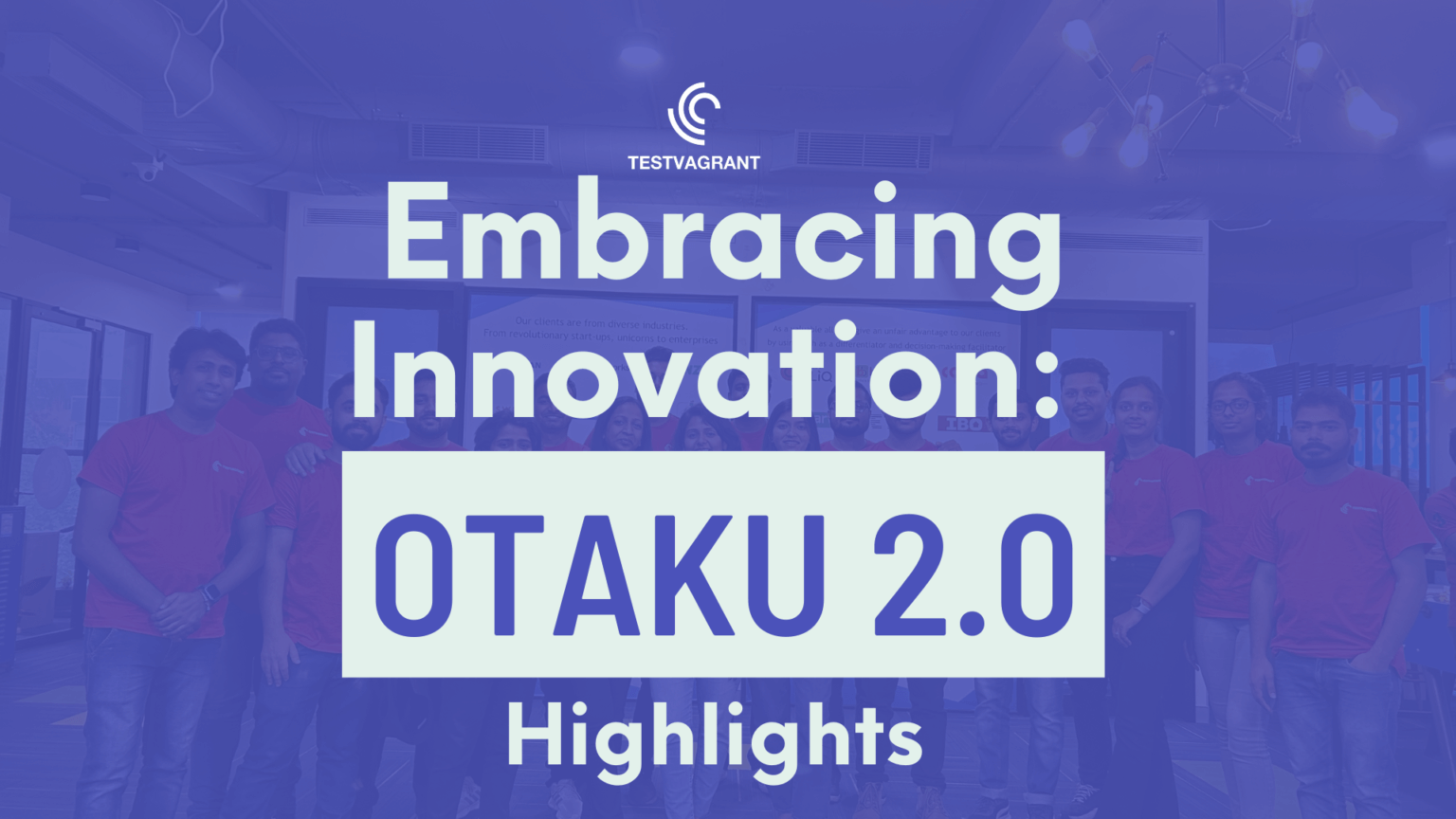
Test Observability & Engineering effectiveness
“Engineering Effectiveness” has been a central topic of discussion and focus this year

Are You an Agile QA or Just a QA in Agile Team
While most of us who have an experience of working in an agile team may assume that we are an agile QA by default, the truth is…
Being an Agile QA is a process of continuous enquiry and continuous improvement.
But what does that truly mean?
How do I measure my effectiveness as an Agile QA?
How can I improve as an Agile QA?
All very relevant questions!
You can answer them for yourself using the checklist that has been shared in the later part of this article.
But to understand the effectiveness of that checklist, let’s first relook at some Agile concepts on which it is based!
The essence of the Agile Manifesto in just a couple of statements can be:
Agile proposes periodic cycles of incremental assessments and improvements to achieve a larger goal
Agile is not just a methodology, it’s a mindset of co-ownership of product deliverables that needs to be developed and practiced by each member of the Agile team.
AGILE TESTING being a sub-process of Agile, it adheres to all the principles on which Agile is based.
So in turn,
Agile testing is a mindset of measuring QA impact in all areas of product development on a periodic basis.
Using the feedback coming out of the assessment exercise in making incremental improvements in the process in every consecutive cycle.
One of the most significant contributions on Agile testing comes from Lisa Crispin and Janet Gregory who distilled Agile testing into 10 principles in their book Agile Testing: A Practical Guide for Testers and Agile Teams.
Here are those
1. Provide continuous feedback —The agile tester is central to providing the team with feedback: Acceptance criteria is the most concrete way to measure positive progress on an agile project. Tests also help identify issues and capture decisions on appropriate future direction.
2. Deliver value to the customer — The insistence on acceptance tests is a “reality check” on scope creep. Acceptance tests help us all understand what it means to realise a customer’s needs.
3. Enable face to face communication — Testers can often be the ones in a team responsible for bridging the communication gap between the customers (BAs, product owners, etc.) and programmers. A tester can be the one who physically brings these people together, as well as the one who drives derivation of a common language between the two parties.
4. Have courage — One of the larger challenges in Agile is in sustaining a fast-paced iterative environment, where every two weeks we need to ship quality software. This challenge demands significant courage. Yet the irony is that we also need to understand the iterations afford us opportunities to learn how to fail and adapt — something that can require an even heavier dose of courage!
5. Keep it simple — Agile testers can help push back against an insistence on overly-elaborate features. Testers can also help the customer understand how to incrementally deliver value. They must learn an appropriate balance of iterative testing — just enough to provide the right confidence in delivering software.
6. Practice continuous improvement — A key element of using iterations is to allow for learning to take place. Testers should be part of retrospectives (and if you’re not consistently adapting based on the results of retrospectives, you’re not agile enough.) Testers should also treat their career as profession by continually learning more about testing practices, tools, and the system itself.
7. Respond to change — Agile testing is dramatically different in that there are few true “cutoff points” — things keep changing and thus must be continually re-tested. This requires automation! The agile tester learns to cope with the customer changing his or her mind from iteration to iteration, and correspondingly learns how to incrementally flesh out necessary testing specifications.
8. Self-organise — In a truly agile team, everyone has the capability to act as a tester. Agile teams know how to shift focus as needed, from time to time. For example, it may be prudent for programmers to turn their attention toward helping verify a “done” but not “done done” feature.
9. Focus on people — Testers are often at the bottom of the totem pole in a non-agile software development team. Work is thrown at them, their available slice of time is continually squished, and programmers often look upon them as lesser. In an agile team, everyone shares the responsibility for ensuring that we are building quality product. Agile testers are key in bringing their testing expertise to the team.
10. Enjoy — The ability to help drive a process and be a true, equal contributor to a team can be extremely gratifying for an agile tester.
These 10 principles have been widely accepted as the foundation for Agile testing processes.
Another important concept which was refined and promoted in the same book was Agile Testing Quadrants.
This is how it can be visualised —
Agile Quadrant 1 — Emphasis is mainly on code quality.
Agile Quadrant 2 — Emphasis is mainly on business requirements.
Agile Quadrant 3 — Emphasis is mainly on building confidence in the product through testing in multiple iterations. It provides feedback to Quadrant 1 & 2.
Agile Quadrant 4 — Emphasis is mainly on non-functional qualities and expected value.
So, by now, you may have realised that,
Agile QA is the one who stays true to the Principles of Agile Testing and is impactful in all aspects of the Agile Testing Quadrants.
So, to assess our impact as an Agile QA we can identify some practical assessment areas based on the above concepts.
Following are some assessment areas collated for your persual.
We can call it an Agile QA’s Self Assessment Checklist:
e.g., do I know if my project is based on client-server architecture, service-oriented architecture or something else?
e.g., React, NodeJS, MongoDB, kafka, etc. are being used in my project. Do I have high level understanding of how these work?
e.g., backend services developed using Express. So can I code in JavaScript?
e.g., in eCommerce app, cart service is dependent on inventory service for providing product availability information.
e.g., Cypress for API testing in JavaScript
e.g., Jest
e.g., component testing using mocks and/or stubs, services testing, UI testing on mobile and web.
e.g., looking into GCP or Azure for underlying issues in a specific service.
e.g., The product belongs to e-commerce, banking, or some other domain.
e.g., 5 pillars of e-commerce
e.g., e-commerce app is used by retail customers, product like workflow management system is used by organisations.
e.g., How many Android and iOS users of an e-commerce app? How many use latest OS/device and how many on legacy OS/device? Which is the preferred browser for usage by most customers?
e.g., Most production issues are reported in which feature
e.g., QA’s communication with team members is often too long and not precise which makes the team lose interest in the discussion or in meetings with fixed duration, team just moves on to next person
e.g., there is discrepancy in requirements mentioned in a user story. QA observes it but doesn’t show urgency to call it out early.
Result: No time left for the team to fix it.
e.g., QA has taken initiative to develop a POC project on performance test automation which will help team in long run. But, never calls it out in team meetings, which means no one can give any inputs or suggestions on it.
e.g., QA caught a bug couple of days back and assigned to a developer, but developer checked it only today. QA and developer meet in status meeting everyday but communication on the bug never happened until today.. valuable time lost?
e.g., Multiple bugs filed this sprint but QA didn’t set priority. Developer thinks Bug 123 not priority (but it is) and hence fixes the other bugs first. Before he comes back to Bug 123 the release date is up!
e.g., Since past few days one major test was failing repeatedly but no one in team noticed it till it was too late.
Reason – QA wrote automated regression tests and set them up in CI pipeline. But.. didn’t bother to set up auto publishing of test reports.
e.g., QA was aware that he needs to take leave for personal reasons on date of release but informs only couple of days before release. Intimating the team a week ago would have helped the team fill up the void.
e.g., QA lacks experience in microservices architecture. So always looks out for more work on front-end testing and automation where this lack of knowledge might not be a hindrance.
e.g., QA lacks experience on eCommerce applications. So always looks out for tagging along with more experienced QAs, so that this lack of knowledge might not be a hindrance.
e.g, QA thinks that the team is not doing estimation correctly since every sprint some backlog gets carried over to next sprint. But avoids calling this out during sprint retrospective so as to not hurt team sentiments.
e.g., QA hasn’t worked before on discount coupons feature in the e-commerce app. But tries to somehow manage rather than approaching any SME in the team or outside.
e.g., QA finds the requirements written in the story to be verbose but doesn’t give the feedback to the BA about it.
e.g., in an e-commerce app, the case where discount coupon is enabled when user adds more than 5 items to cart is missed in requirements. QA doesn’t call it out.
e.g., a specific microservice has high failure rate. QA can help identify the root cause and suggest possible solutions.
Note: Depending on your team dynamics some questions might not be relevant/exercisable OR some questions might have to be added to the list. So take these as pointers for self assessment of Agile QA skills, but not as commandment.
Once we are done with the assessment then what?
The day you finish the assessment can be the day your journey to Agile QA greatness begins.. It’s all about applying oneself to the improvement tasks as early as possible.
Self improvement steps may involve (but not limited to)
Carrying out this exercise of self assessment and self improvement as an Agile QA would not only help your team, but also yourself. It will affect both your contributions and confidence..
And only then will you be able to experience in your role as Agile QA the final principle of Agile Testing. That is to…
Share This Article

“Engineering Effectiveness” has been a central topic of discussion and focus this year

With us, you’re not just a part of a company; you’re part of a movement dedicated to pushing boundaries, breaking barriers, and achieving the extraordinary.

Otaku 2.0 sought to redefine the way we approach testing, celebrate the spirit of innovation, and pave the way for a brighter future in tech.